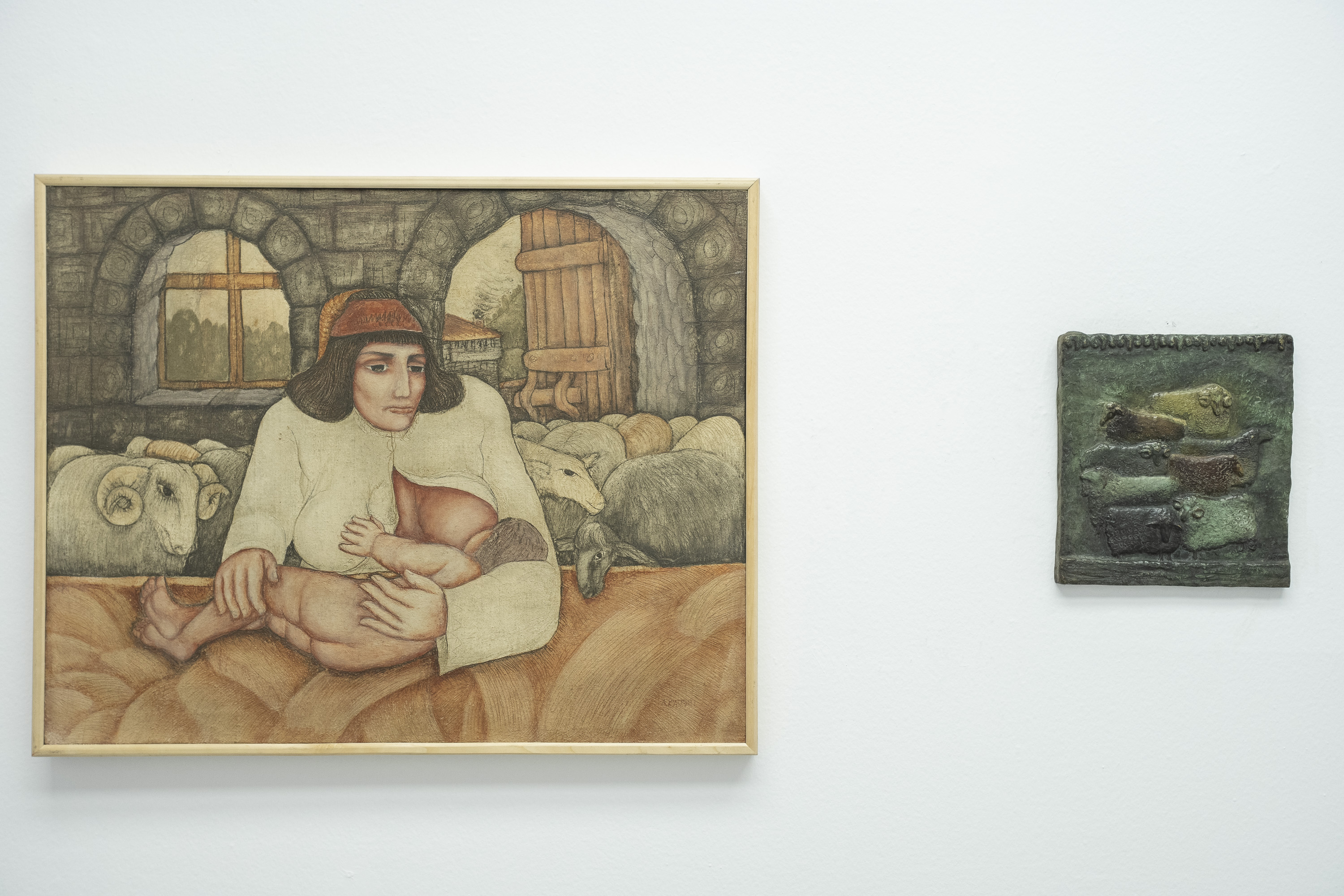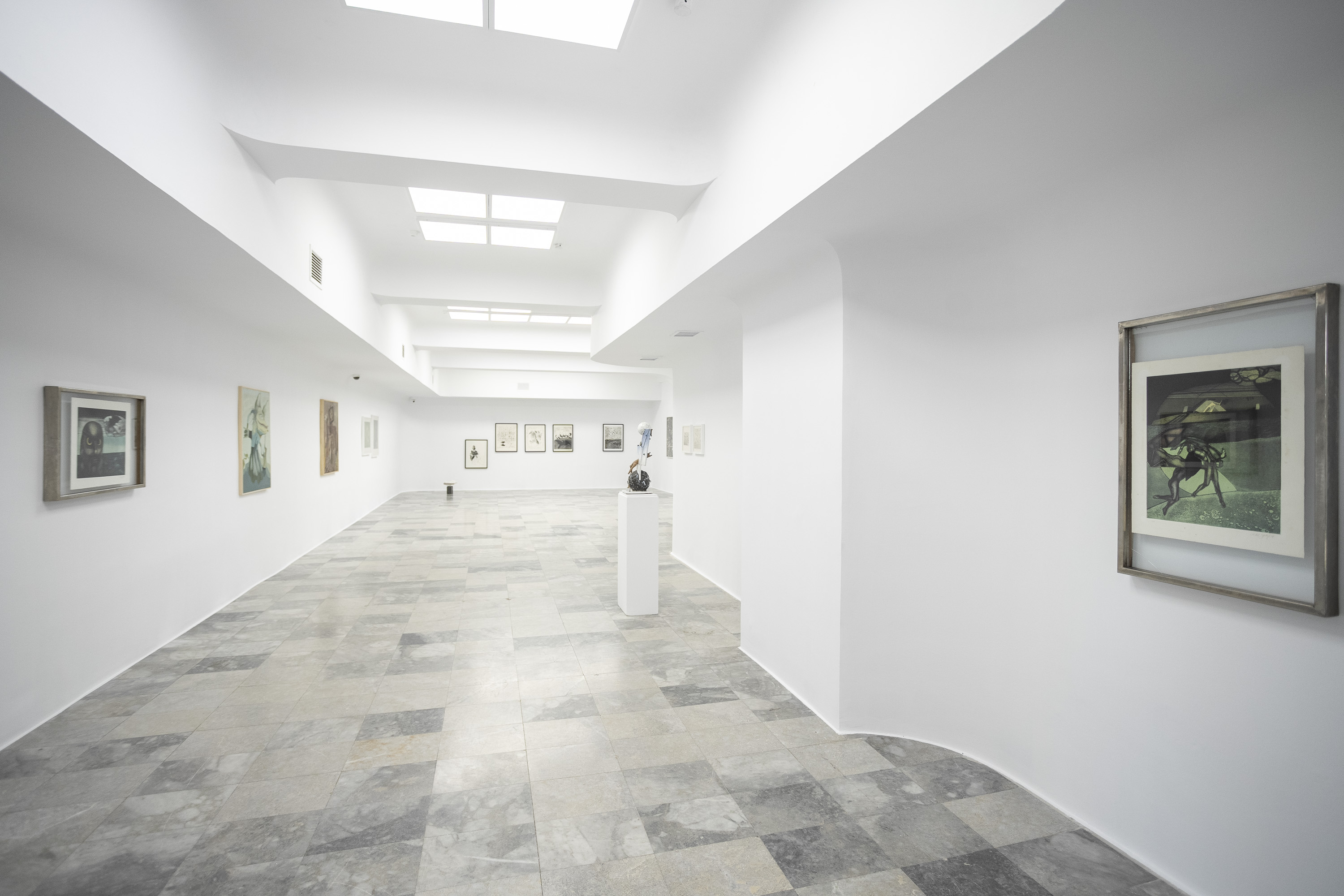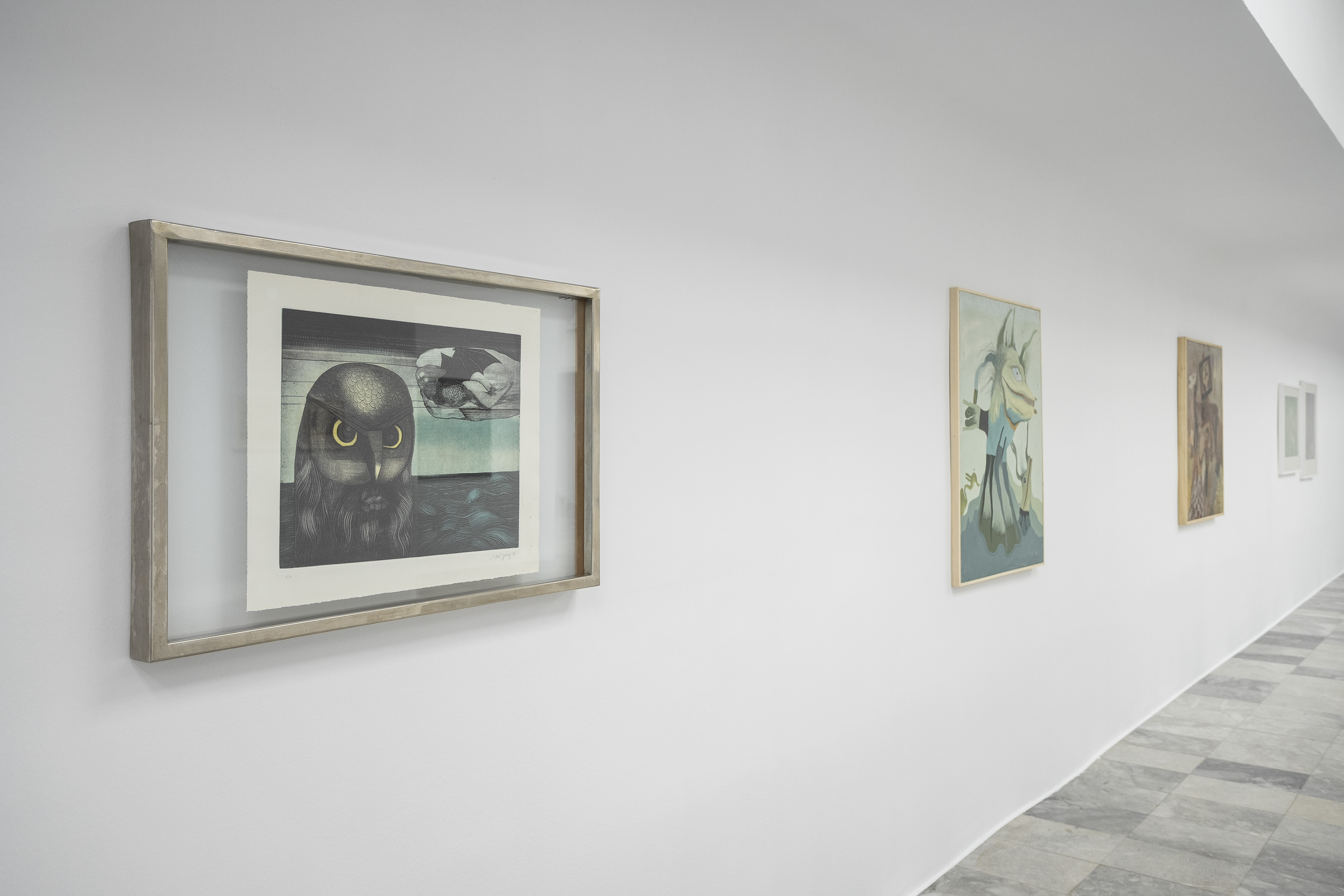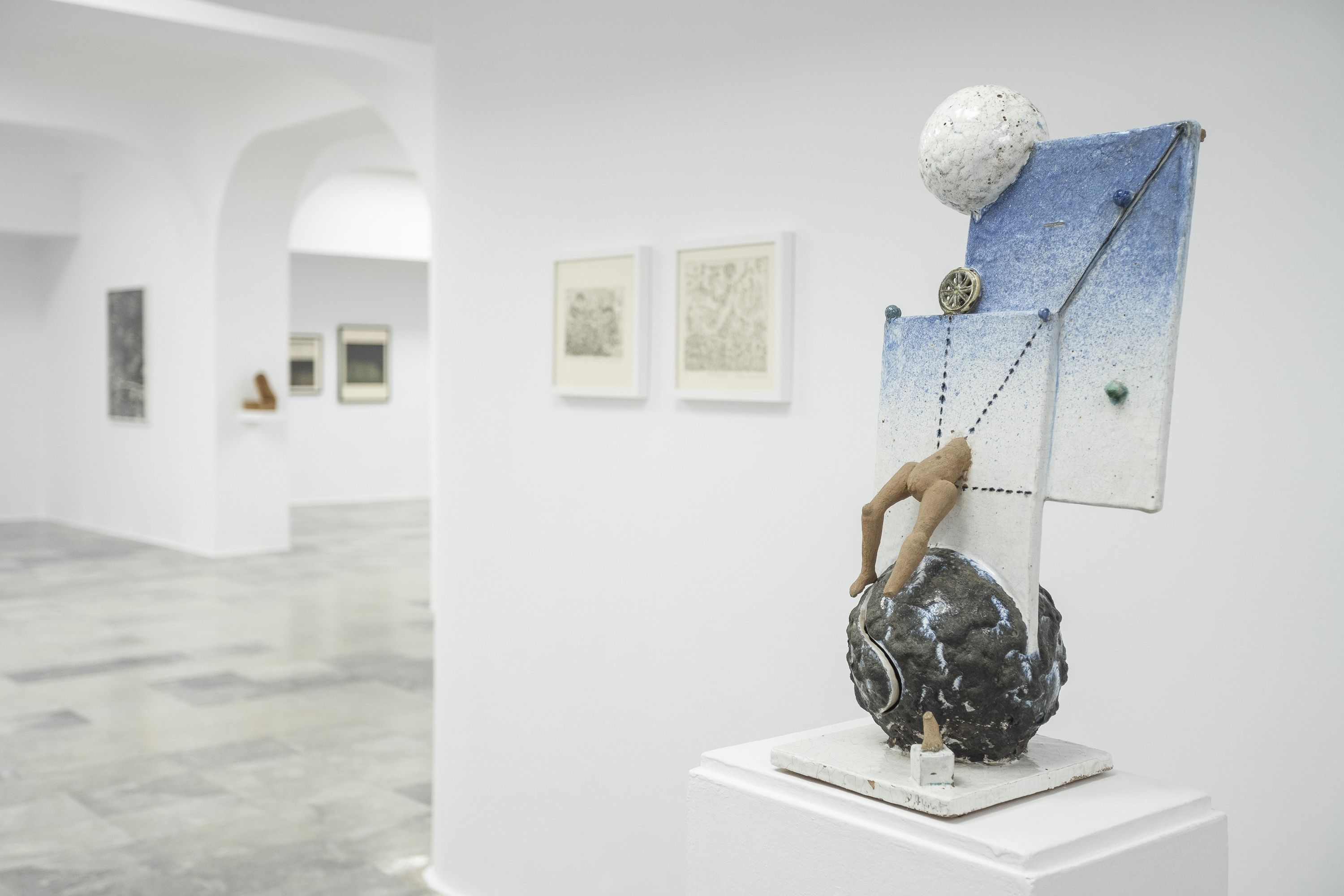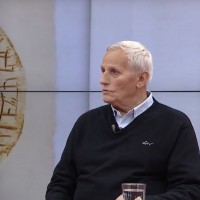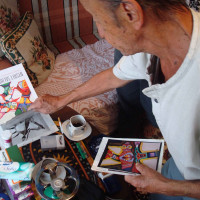From the Collection: When Species Meet
Art has an entwined history of representing life and identity, as well as the human positions in relation to other non-human beings. This exhibition takes as its point of departure the long-standing inclusion of animals in visual art through time as found in the permanent collection of the National Gallery of Kosovo, featuring works from the late 20th century. The selected works go beyond merely representing animals as they are depicted in imaginary and real environments, blurring the hierarchies between species.
Animal imagery has evolved into a significant artistic exploration, often transcending rationality and giving new life to creatures that enable us to question ecological balance. A human-centric perspective is evident in the works of Tahir Emra and Ivan Lovrencić, and it is emphasized in the paintings of Florika Ket and Adem Kastrati which depict the interconnectedness between humans and animals in everyday rural environments. The painting of Mikel Gjokaj and the sculptures by Radoslav Musa Miketić and Dragoljub Adžić, mystify and reify both human and nonhuman animals with anthropomorphic qualities. All three artists reference the Greek mythological figure Icarus, who perished after flying too close to the sun which caused his wax wings to melt. The figures of birds that often symbolizes freedom, communication and migration, is a recurring motif in a number of works such as the drawings of Zoran Jovanović Dobratin, Isak Asllani and Fevzi Tufekçi.
In her book about people and animals "When Species Meet" from which the exhibition draws its title, the author Donna Harawary writes: “figures are not representations or didactic illustrations, but rather material-semiotic nodes or knots in which diverse bodies and meanings co-shape one another”. By examining otherness and cohabitation, the exhibition turns into a nest of different encounters, creating the space to explore the interconnectedness of all life forms within nature.
